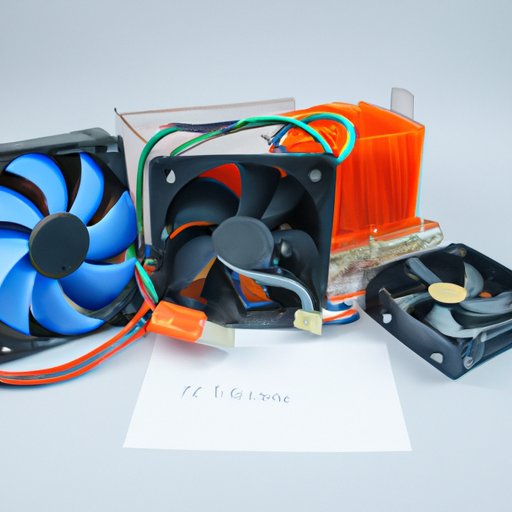Introduction
Computer temperature is the amount of heat generated by a computer system. It is important to keep an eye on your computer’s temperature as too much heat can damage components, leading to performance issues or even total failure of the system. In order to ensure your computer remains in optimal condition, it is important to regularly check its temperature.

Use a Temperature Monitor Program
A temperature monitor program is a software application that monitors the internal temperature of your computer. It allows you to view real-time temperature readings, as well as set up alerts when the temperature reaches a certain threshold. This can be a great way to keep an eye on your computer’s temperature without having to manually check it all the time.
Benefits of Using a Temperature Monitor Program
- Real-time temperature readings
- Ability to set up temperature alerts
- Easy to use
How to Install and Use a Temperature Monitor Program
- Download and install a temperature monitor program.
- Open the program and click on “Settings.”
- Configure the temperature alert settings for when you want to be notified of high temperatures.
- Click on “Monitor” and view the temperature readings.
Check BIOS Settings
BIOS stands for Basic Input/Output System. It is the firmware interface between your computer’s hardware and its operating system. BIOS settings allow you to configure various aspects of your computer, including the ability to monitor your computer’s temperature.
How to Access BIOS Settings
- Restart your computer and press the BIOS key during startup (usually “F2” or “Del”).
- Navigate to the “Advanced” tab.
- Select “Hardware Monitor.”
- View the temperature readings.
How to Adjust BIOS Settings to Monitor Computer Temperature
- Access the BIOS settings as described above.
- Navigate to the “Advanced” tab.
- Select “Hardware Monitor.”
- Enable “Monitor CPU Temperature” and “Monitor System Temperature.”
- Set the desired temperature thresholds for when you want to be alerted.
- Save the changes and exit the BIOS settings.
Use CPUID Hardware Monitor
CPUID Hardware Monitor is a free software utility that allows you to monitor your computer’s temperature in real time. It also provides detailed information about your computer’s hardware, such as the CPU and GPU temperatures, fan speeds, and voltages.
Benefits of Using CPUID Hardware Monitor
- Real-time temperature readings
- Detailed hardware information
- Ability to set up temperature alerts
- Easy to use
How to Install and Use CPUID Hardware Monitor
- Download and install CPUID Hardware Monitor.
- Open the program and click on “Settings.”
- Configure the temperature alert settings for when you want to be notified of high temperatures.
- Click on “Monitor” and view the temperature readings.
Monitor Heat Sinks and Fans
Heat sinks and fans are devices used to dissipate heat from your computer’s components. If these devices are not working properly, your computer’s temperature may rise significantly. It is important to regularly check these components to ensure they are working properly.
Benefits of Monitoring Heat Sinks and Fans
- Reduced risk of overheating
- Improved performance
- Prolonged lifespan of components
How to Monitor Heat Sinks and Fans
- Power down your computer and open the case.
- Visually inspect the heat sink and fan for any signs of dust buildup or other debris.
- If necessary, clean the heat sink and fan using compressed air.
- Check that the fan is spinning properly.
- Replace any damaged or malfunctioning components.
- Close the case and power on your computer.
Install a Temperature Sensor
A temperature sensor is a device that measures the temperature inside your computer. It can be installed directly on your computer’s motherboard or connected via USB or Ethernet. Installing a temperature sensor can provide accurate, real-time temperature readings.
Benefits of Installing a Temperature Sensor
- Accurate temperature readings
- Real-time data
- Easy to install and use
How to Install a Temperature Sensor
- Purchase a compatible temperature sensor.
- Power down your computer and open the case.
- Mount the temperature sensor onto your computer’s motherboard.
- Connect the temperature sensor to your computer via USB or Ethernet.
- Install the accompanying software.
- View the temperature readings.
Conclusion
Monitoring your computer’s temperature is an important part of keeping it running optimally. There are several ways to check your computer’s temperature, such as using a temperature monitor program, checking BIOS settings, using CPUID Hardware Monitor, monitoring heat sinks and fans, or installing a temperature sensor. By regularly checking your computer’s temperature, you can ensure it is running at its best.
Additional Resources


